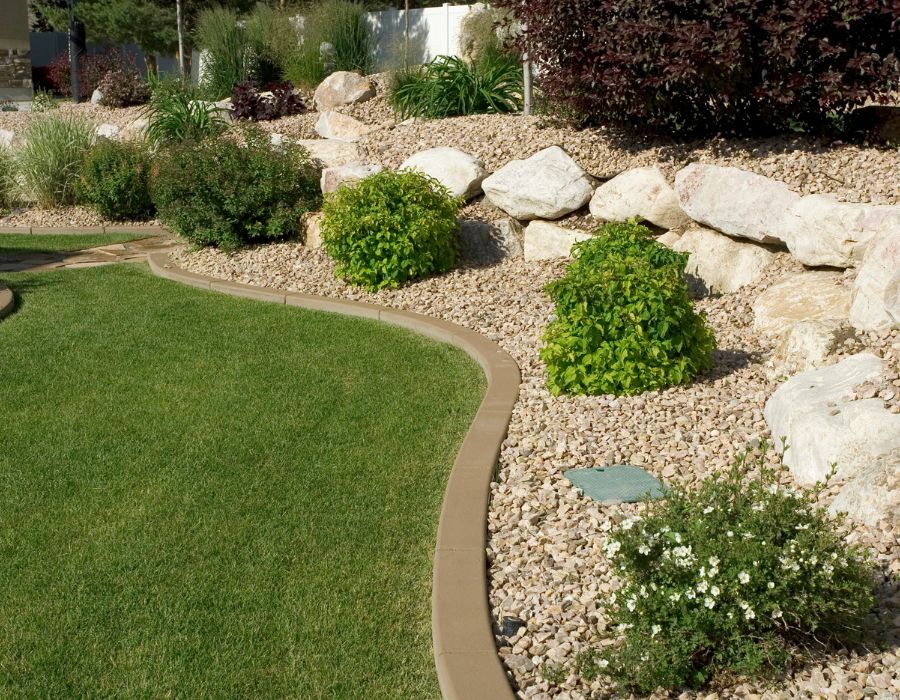A well-maintained yard enhances curb appeal and creates a welcoming outdoor space. However, keeping your landscape vibrant and healthy requires seasonal adjustments. This guide provides essential seasonal landscaping tips to help you manage your yard effectively throughout the year, from spring lawn care to winter landscaping maintenance.
Spring: Reviving Your Lawn and Garden
Spring is the season of renewal, making it the ideal time to prepare your lawn and garden for lush growth.
Key Tasks for Spring Landscaping:
- Lawn Aeration & Fertilization:
- Aerate your lawn to improve soil oxygenation and enhance root growth.
- Apply a balanced fertilizer to encourage strong, green growth.
- Test your soil pH to determine nutrient deficiencies and adjust accordingly.
- Pruning Guidelines:
- Trim dead branches from trees and shrubs to promote healthy development.
- Cut back perennials that were left untouched in the winter.
- Prune flowering plants after they bloom to encourage next season’s growth.
- Seasonal Blooms & Planting:
- Choose early-blooming flowers like tulips, daffodils, and crocuses.
- Start planting perennials and shrubs to establish their roots before summer heat.
- Incorporate ground covers like creeping phlox for added texture and erosion control.
- Mulching for Moisture Retention:
- Spread mulch around trees and flower beds to maintain soil moisture and prevent weeds.
- Choose organic mulches like wood chips, straw, or bark to enhance soil quality over time.
Summer: Maintaining a Thriving Garden
With increased temperatures and sun exposure, summer garden maintenance focuses on hydration and pest control.
Key Tasks for Summer Landscaping:
- Lawn Care:
- Mow at a higher setting to prevent grass from drying out.
- Water deeply but less frequently to encourage deep root growth.
- Consider installing a drip irrigation system for efficient watering.
- Pest & Weed Control:
- Inspect plants for pests like aphids and treat them with organic or chemical solutions.
- Remove weeds regularly to prevent them from overtaking your lawn.
- Apply mulch to suppress weeds and reduce water evaporation.
- Summer Garden Maintenance:
- Deadhead flowers to encourage continuous blooming.
- Provide support for climbing plants and vegetables.
- Use shade cloth to protect delicate plants from excessive heat.
- Outdoor Space Enhancements:
- Add shading elements like pergolas or umbrellas to keep patios cool.
- Consider drought-resistant plants like succulents, lavender, and ornamental grasses.
- Create outdoor seating areas with weather-resistant furniture for summer enjoyment.
Fall: Preparing for Cooler Weather
As temperatures drop, it’s time to prepare your yard for dormancy and future growth.
Key Tasks for Fall Landscaping:
- Fall Leaf Cleanup:
- Rake leaves regularly to prevent lawn suffocation.
- Use leaves as compost or mulch for added nutrients.
- Invest in a mulching mower to break down leaves naturally into the lawn.
- Final Lawn Care Routine:
- Aerate and overseed your lawn to strengthen it for winter.
- Apply a fall-specific fertilizer to nourish roots during dormancy.
- Cut grass shorter before winter to reduce the risk of snow mold.
- Tree & Shrub Maintenance:
- Prune trees and shrubs to prevent winter storm damage.
- Wrap young trees to protect them from extreme cold.
- Apply a layer of mulch around the base of trees for insulation.
- Seasonal Planting:
- Plant spring-blooming bulbs like tulips and hyacinths before the first frost.
- Transition summer plants to indoor pots if needed.
- Add hardy plants like pansies and ornamental kale for late-season color.
Winter: Protecting Your Landscape
Winter landscaping requires protecting plants and structures from frost, snow, and ice.
Key Tasks for Winter Landscaping:
- Weather-Proofing Plants:
- Cover delicate plants with burlap or frost cloths.
- Mulch around plant bases to insulate roots.
- Avoid pruning in winter, as it can cause plants to become more vulnerable to cold damage.
- Snow & Ice Management:
- Shovel driveways and walkways carefully to avoid damaging hardscapes.
- Use eco-friendly de-icing products to prevent plant damage.
- Avoid piling snow on delicate shrubs, as excess weight can cause breakage.
- Lawn & Garden Rest Period:
- Avoid excessive foot traffic on frozen grass.
- Start planning for spring landscaping projects.
- Maintain bird feeders to attract wildlife and create a vibrant winter garden.
FAQs
How often should I fertilize my lawn throughout the year?
A fertilizing schedule depends on your grass type, but most lawns benefit from fertilization in early spring, late spring, early fall, and late fall. Cool-season grasses need more frequent feeding in fall, while warm-season grasses benefit from summer applications.
Which plants thrive best in each season?
- Spring: Tulips, daffodils, azaleas, cherry blossoms, and lilacs.
- Summer: Roses, sunflowers, lavender, marigolds, and hydrangeas.
- Fall: Mums, asters, ornamental grasses, sedum, and Japanese maples.
- Winter: Evergreen shrubs, holly, winterberry, camellias, and hellebores.
How do I protect my landscaping from winter frost?
- Apply mulch around plant bases to insulate roots.
- Cover sensitive plants with burlap or frost cloths.
- Water plants thoroughly before freezing temperatures set in to prevent dehydration.
- Use anti-desiccant sprays on evergreens to reduce moisture loss.
Is it necessary to aerate my lawn every spring?
Lawn aeration is beneficial, especially for compacted soil. If your lawn experiences heavy foot traffic, annual aeration can help maintain healthy grass growth. However, if your soil is loose and drains well, aeration may only be needed every other year.
Conclusion
By following these seasonal landscaping tips, you can ensure your yard remains vibrant year-round. Adjusting your approach based on the season will help maintain your home’s year-round curb appeal while keeping plants, grass, and outdoor features in top condition. From spring lawn care to winter landscaping, taking the time to maintain your yard ensures it thrives in all weather conditions. Whether you’re planting seasonal flowers, aerating your lawn, or protecting delicate plants from frost, proper landscaping practices will keep your outdoor space looking its best throughout the year.





